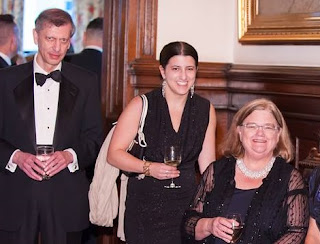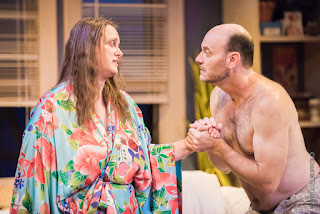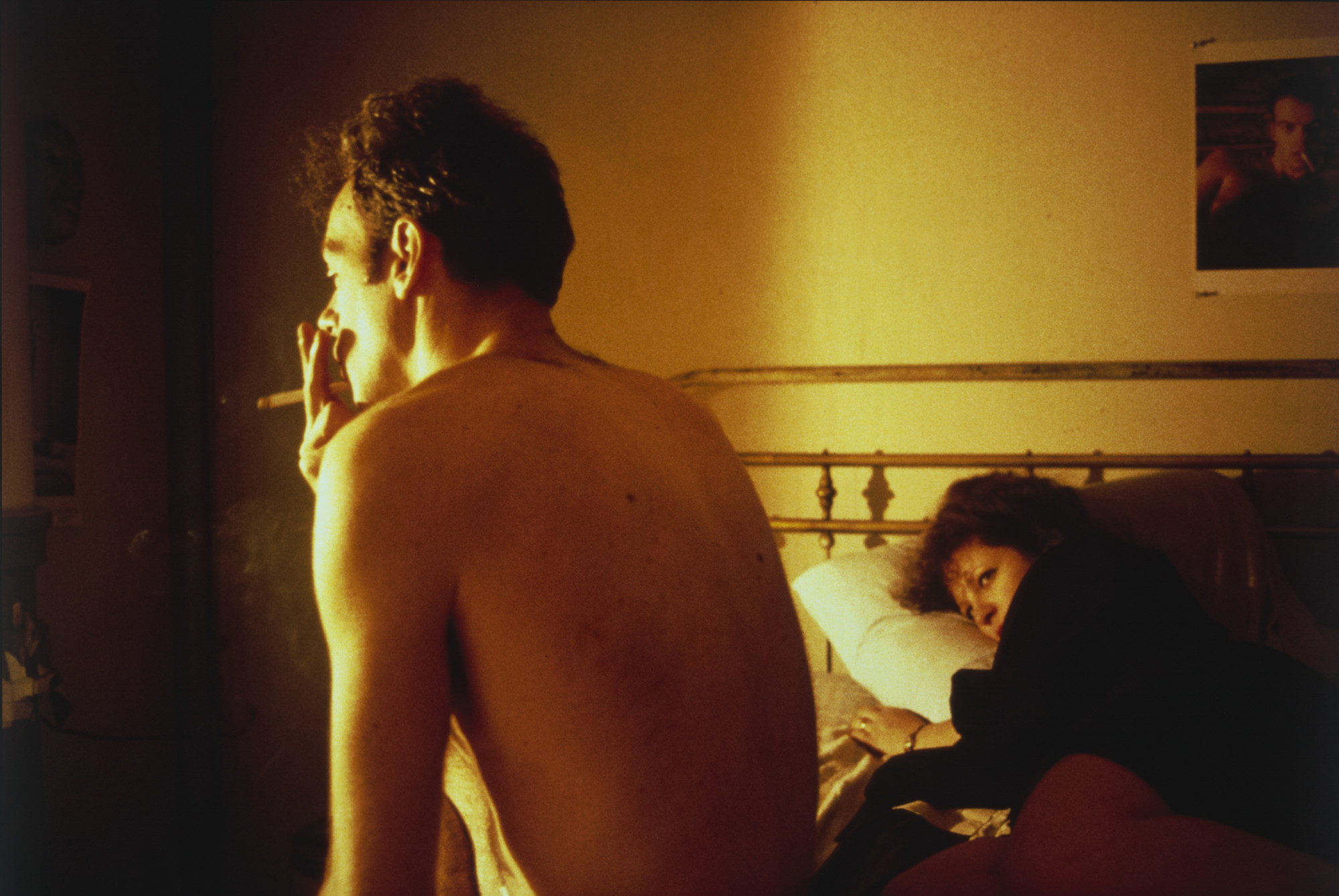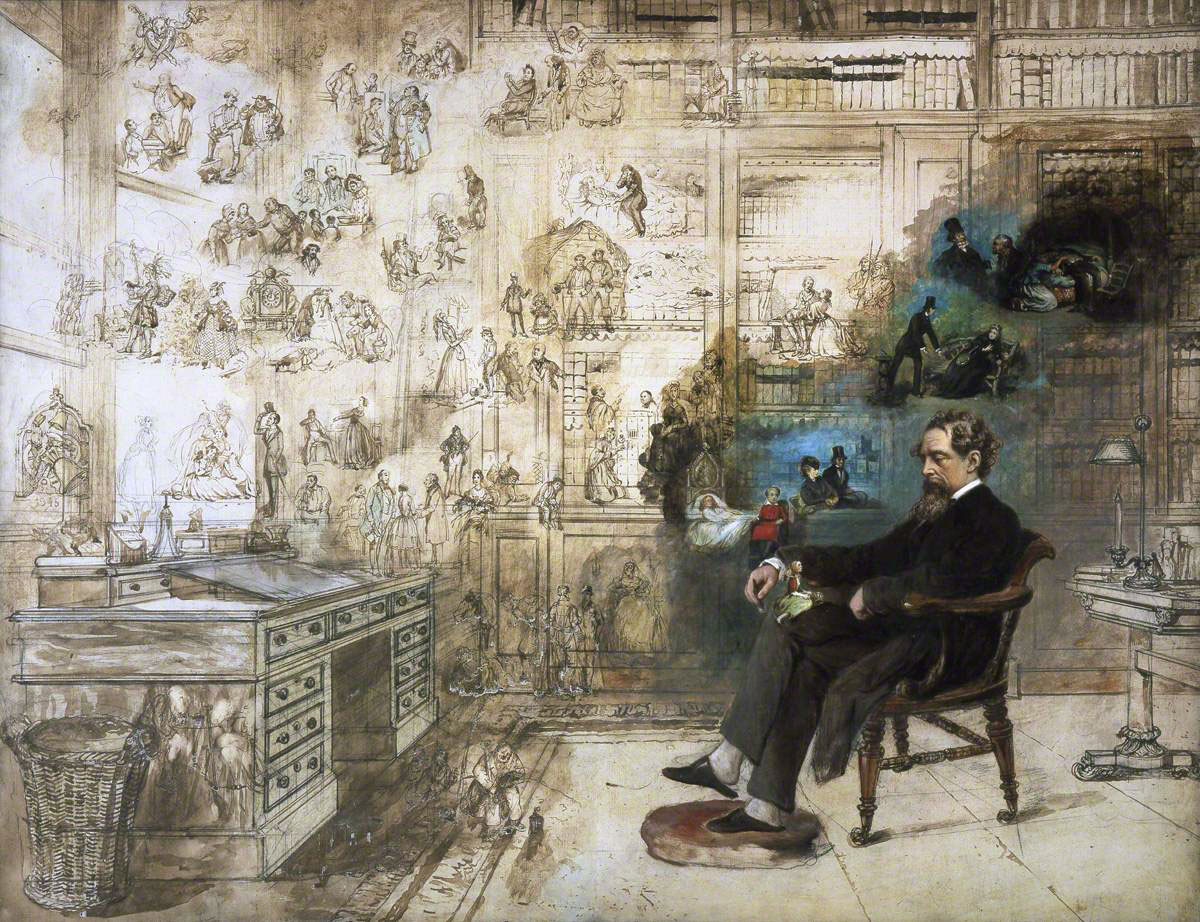 |
| Debbie (on right) joined the MCT board shortly after her husband Jamshed (left) ended his tenure. |
I was born in Minneapolis, and went to Concordia College in Moorhead, Minnesota. After college I moved to Washington D.C. to attend law school at George Washington University, and then a job at the law firm of Foley & Lardner brought me to Milwaukee. I practiced law there for several years, after which I practiced law part-time on my own, and shifted careers to arts management, with leadership roles at the Milwaukee Symphony Orchestra and the Milwaukee Children’s Choir.
2. HOW DID YOU LEARN ABOUT MCT?
I started attending plays with my husband Jamshed, who was on the MCT board for nine years. And when I worked at the Milwaukee Children’s Choir, our office was in the office right next door.
3. WHY DID YOU DECIDE TO JOIN THE BOARD?
By the time Jamshed’s board term was up I was quite engaged with MCT. I felt the quality of the plays kept getting better every season and appreciated the company’s mission. I joined the board in 2011 and love live theatre even more now.
Each season, my husband and I sponsor a production in the Studio Theatre. It is usually a show that is more cutting-edge, adventurous and not as well known. I don’t want to just see the classics. I want to see some new things that are well done. We ask friends to the show on a Saturday; some attend the matinee, and some attend the evening show, and we all come together in between for a dinner Jamshed and I host in the Skylight Bar & Bistro upstairs. One of the best parts of that experience is having our artistic director, Michael Wright, come and speak with our guests about the show. It’s kind of like our own private “Talk Theatre.”
MCT does a regular “Talk Theatre” program before some of the Wednesday matinee shows of the season. I started going to those shows with a group from the Woman’s Club of Milwaukee and we enjoy hearing from Michael Wright and some of the show’s artists.
4. FAVORITE PLAYS?
MASTER CLASS during the 2014-2015 season was a favorite because I’m a singer.
MCT put on an incredible adaptation of GREAT EXPECTATIONS back in April. More recently, I thought DEATHTRAP was well-done and loved seeing FRANKIE AND JOHNNY IN THE CLAIR DE LUNE after recommending the show to staff.
5. FAVORITE ACTORS?
James Ridge in UNDERNEATH THE LINTEL (2012-2013 season) was incredible. I’m also a big fan of Marcella Kearns and her performance in MOONLIGHT AND MAGNOLIAS (2007-2008 season) was a showstopper. She was also great in FRANKIE AND JOHNNY in the current season.
6. SPECIAL MOMENTS AT MCT?
Well, Marcella with her banana in MOONLIGHT was special! But generally, for me, it’s the quality of the performances that are special. The shows keep getting better every year, and our reach into the community gets ever deeper. I especially love the work that we do with local high school students in the Young Playwrights Festival every year and our partnerships with First Stage. It’s wonderful to see how we are encouraging the creative talents of our younger generations and giving them a chance to find their own voice.
7. WHAT DO YOU DO PROFESSIONALLY?
I am officially retired now, and like most retired people, I’m finding myself busier than ever. I’m what I would call a “professional volunteer.”
Before retirement, I practiced law in Milwaukee, until switching to arts management. I was the first Executive Director of the Milwaukee Children’s Choir and spent about eight years in that position. MCC’s founder and artistic director, Emily Crocker, helped so many young people learn how to use their “original instrument,” and assisting in that effort was very gratifying. I spent almost a year running the Milwaukee Symphony Orchestra as an interim Executive Director. And now I sit on arts boards!
8. WHAT YOU DO FOR FUN? ANY HOBBIES?
I love to sing! I’ve been belting tunes since I was three, sang through high school, took a break during college, and then sang at a piano bar during my law school years. I am currently a member of the Milwaukee Symphony Chorus. I love being part of a community of singers, performing exquisite repertoire, and having the best seat in the house – on stage – with the incredible Milwaukee Symphony Orchestra.
I am also an avid genealogist. I am the Registrar for the Milwaukee chapter of the Daughters of the American Revolution, and I write a family history blog. I encourage everyone to explore their family tree, you may be surprised what you find there. And while you explore, you get to reexamine history in a very personal way and discover things about yourself that you didn’t know before.
9. WHERE TO EAT BEFORE A SHOW?
My new favorite place is Tre Rivali, the restaurant in the Journeyman Hotel in the Third Ward. I think the food is delicious. I’ve never had a bad meal there. They have a great artisan cheese plate and the Sticky Toffee Pudding for dessert is out of this world!
10. FAVORITE WISCONSIN SPOTS?
I love to visit Madison. We go there regularly to visit my daughter. With my interest in genealogy, I also like to visit the Wisconsin Historical Society’s library on the UW campus. In the summertime, my husband and I like to visit Spring Green and see shows at the American Players Theatre. We also try to get to the Shaw Festival in Ontario each summer, and combine it with a visit to Jamshed’s Canadian relatives.
I have lots of fond memories taking my daughter camping in Two Rivers. It’s special for me because I grew up camping with my parents. To date, I’ve camped in every state in the country except Alaska and Hawaii. (I probably should add that I slept through Rhode Island.)
11. ANY OTHER ORGANIZATIONS THAT YOU’RE A PART OF THAT YOU ENJOY AND WANT PEOPLE TO KNOW ABOUT?
As I mentioned earlier, I sing with the Milwaukee Symphony Chorus. I am also on the board of the Milwaukee Symphony Orchestra. I just finished nine years of service on the board of Chorus America, the North American advocacy, research, and leadership development organization that advances the choral music field.
My passion for genealogy drew me to the Milwaukee Chapter of the Daughters of the American Revolution, and the joy of hunting for dead people led to my joining a few other lineage societies. I am also an active member of the Woman’s Club of Wisconsin and enjoy the programs and camaraderie I find there.
12. BACK TO MCT: WHAT WOULD YOU LIKE PEOPLE IN THE AREA TO KNOW ABOUT THIS THEATRE COMPANY WHO MAY NOT BE FAMILIAR WITH IT?
I think I can narrow it down to three main points. First, MCT produces really fine quality work. The shows never disappoint and the people we invite uniformly praise the acting and recognize that it’s good theater. Second, MCT is “locally grown” using Milwaukee talent on and off the stage. And finally, MCT has deep roots in the community with more than 40 years in the local theatre scene.
MASTER CLASS during the 2014-2015 season was a favorite because I’m a singer.
MCT put on an incredible adaptation of GREAT EXPECTATIONS back in April. More recently, I thought DEATHTRAP was well-done and loved seeing FRANKIE AND JOHNNY IN THE CLAIR DE LUNE after recommending the show to staff.
5. FAVORITE ACTORS?
James Ridge in UNDERNEATH THE LINTEL (2012-2013 season) was incredible. I’m also a big fan of Marcella Kearns and her performance in MOONLIGHT AND MAGNOLIAS (2007-2008 season) was a showstopper. She was also great in FRANKIE AND JOHNNY in the current season.
6. SPECIAL MOMENTS AT MCT?
Well, Marcella with her banana in MOONLIGHT was special! But generally, for me, it’s the quality of the performances that are special. The shows keep getting better every year, and our reach into the community gets ever deeper. I especially love the work that we do with local high school students in the Young Playwrights Festival every year and our partnerships with First Stage. It’s wonderful to see how we are encouraging the creative talents of our younger generations and giving them a chance to find their own voice.
7. WHAT DO YOU DO PROFESSIONALLY?
I am officially retired now, and like most retired people, I’m finding myself busier than ever. I’m what I would call a “professional volunteer.”
Before retirement, I practiced law in Milwaukee, until switching to arts management. I was the first Executive Director of the Milwaukee Children’s Choir and spent about eight years in that position. MCC’s founder and artistic director, Emily Crocker, helped so many young people learn how to use their “original instrument,” and assisting in that effort was very gratifying. I spent almost a year running the Milwaukee Symphony Orchestra as an interim Executive Director. And now I sit on arts boards!
8. WHAT YOU DO FOR FUN? ANY HOBBIES?
I love to sing! I’ve been belting tunes since I was three, sang through high school, took a break during college, and then sang at a piano bar during my law school years. I am currently a member of the Milwaukee Symphony Chorus. I love being part of a community of singers, performing exquisite repertoire, and having the best seat in the house – on stage – with the incredible Milwaukee Symphony Orchestra.
I am also an avid genealogist. I am the Registrar for the Milwaukee chapter of the Daughters of the American Revolution, and I write a family history blog. I encourage everyone to explore their family tree, you may be surprised what you find there. And while you explore, you get to reexamine history in a very personal way and discover things about yourself that you didn’t know before.
9. WHERE TO EAT BEFORE A SHOW?
My new favorite place is Tre Rivali, the restaurant in the Journeyman Hotel in the Third Ward. I think the food is delicious. I’ve never had a bad meal there. They have a great artisan cheese plate and the Sticky Toffee Pudding for dessert is out of this world!
10. FAVORITE WISCONSIN SPOTS?
I love to visit Madison. We go there regularly to visit my daughter. With my interest in genealogy, I also like to visit the Wisconsin Historical Society’s library on the UW campus. In the summertime, my husband and I like to visit Spring Green and see shows at the American Players Theatre. We also try to get to the Shaw Festival in Ontario each summer, and combine it with a visit to Jamshed’s Canadian relatives.
I have lots of fond memories taking my daughter camping in Two Rivers. It’s special for me because I grew up camping with my parents. To date, I’ve camped in every state in the country except Alaska and Hawaii. (I probably should add that I slept through Rhode Island.)
11. ANY OTHER ORGANIZATIONS THAT YOU’RE A PART OF THAT YOU ENJOY AND WANT PEOPLE TO KNOW ABOUT?
As I mentioned earlier, I sing with the Milwaukee Symphony Chorus. I am also on the board of the Milwaukee Symphony Orchestra. I just finished nine years of service on the board of Chorus America, the North American advocacy, research, and leadership development organization that advances the choral music field.
My passion for genealogy drew me to the Milwaukee Chapter of the Daughters of the American Revolution, and the joy of hunting for dead people led to my joining a few other lineage societies. I am also an active member of the Woman’s Club of Wisconsin and enjoy the programs and camaraderie I find there.
12. BACK TO MCT: WHAT WOULD YOU LIKE PEOPLE IN THE AREA TO KNOW ABOUT THIS THEATRE COMPANY WHO MAY NOT BE FAMILIAR WITH IT?
I think I can narrow it down to three main points. First, MCT produces really fine quality work. The shows never disappoint and the people we invite uniformly praise the acting and recognize that it’s good theater. Second, MCT is “locally grown” using Milwaukee talent on and off the stage. And finally, MCT has deep roots in the community with more than 40 years in the local theatre scene.
































